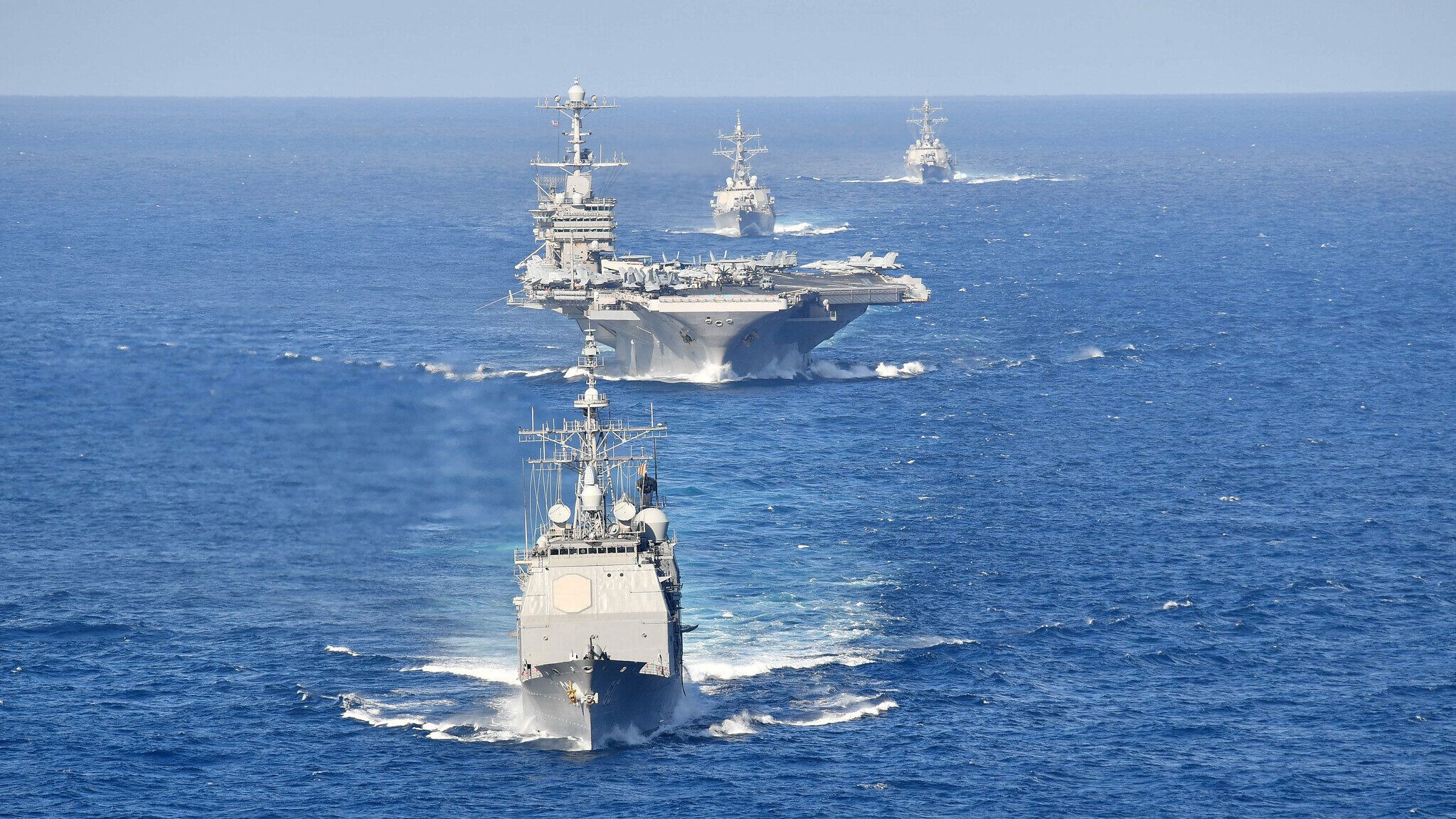
Harry S. Truman Carrier Strike Group in the Atlantic Ocean, April 7, 2019.
This report was updated Sept. 24 at 12:58 ET to add comment from a Navy spokesperson.
WASHINGTON: The Navy’s major acquisition commands are establishing liaisons between the program offices and the admiral in charge of spearheading Project Overmatch, according to a Navy memo, in what’s an important behind-the-scenes structural step for the service to bring the service-wide initiative online.
The Program Integration Offices will report directly to the head of Overmatch, Rear Adm. Doug Small, the senior officer handpicked by Chief of Naval Operations Adm. Michael Gilday to lead the effort.
“The Program Integration Offices will be responsible for integration of Overmatch architectures, standards, and data structures into the platforms and weapons/sensors in their respective domain,” according to the acquisition decision memorandum obtained by Breaking Defense.
“As necessary, the PIOs will coordinate with the appropriate organization/agency to procure, deliver and support communications, networks, applications and other products provided as Government Furnished Equipment to the [Program Executive Offices] and Program Offices responsible for platform/weapon/sensor design, procurement, and sustainment,” the memo continues.
Project Overmatch, the Navy’s portion of the military’s sprawling Joint All Domain Command and Control (JADC2), was established last year with the goal of allowing the Navy to send and receive data from any node in a fleet.
The Navy brass spearheading Overmatch rarely discuss the organizational changes happening behind the scenes. However, the new PIOs will be a crucial logistical step in the process. A Navy spokesman for the service’s acting acquisition executive confirmed the upcoming changes in a statement to Breaking Defense after the initial publication of this report.
“These changes will continue to advance the development, acquisition, and sustainment of [the Naval Operational Architecture] for Project Overmatch,” said Capt. Clayton Doss.
The Aug. 20 memorandum, signed by acting Navy acquisition executive Jay Stefany, indicates some PIOs were established in April 2019 as part of other efforts. Regardless, each systems command — sea, air, information warfare and Marine Corps — were directed to submit detailed plans to Stefany by Sept. 15 outlining how they plan to staff and structure their respective PIOs with Overmatch in mind.
Breaking Defense reported in August that Stefany had directed his program executive offices to submit to him a list of all programs that should be “aligned” under PEO C4I as crucial to the service’s Overmatch efforts.
Gilday was asked by reporters generally about Overmatch on Thrusday, and he said he was pleased with the progress so far. He said the technology to bring the effort online already exists.
“In other words, to be able to take data from any system and to actually transport it on any network to any other system so it can be deciphered and used. We’re able to actually containerize data packets. We have the technology to do that,” Gilday said during an event hosted by Defense One.
The Navy’s senior admiral noted he had recently traveled to be briefed by Small’s team in person back in August, marking one year since the CNO tasked the two-star admiral with leading Overmatch. He also said the service’s current goal is to deploy an early iteration of the project to the fleet sometime next year.
“The goal here in late ‘22, early ’23, is to be able to deploy a carrier strike group with this first spiral, if you will, of a naval operational architecture that allows us to take data and to use it on any network,” the service chief said during the Defense One event.
What is not yet clear about Overmatch is the number of changes that will be necessary in the service’s pre-existing planes, ships, ground vehicles and unmanned systems to accommodate the technical requirements associated with the service’s naval operational architecture. The new integration offices likely will be an important resource for program managers as they work to answer that question for their respective portfolios.






















